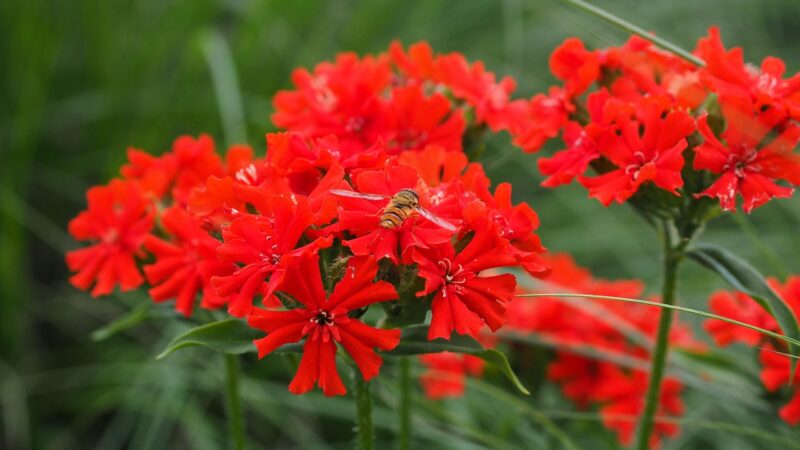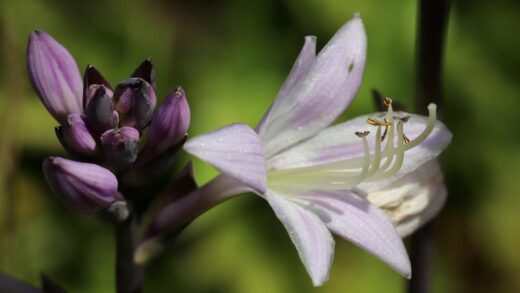Pruning and cutting back of Maltese cross

Pruning and cutting back the Maltese cross is a simple yet vital aspect of its maintenance, ensuring the plant remains tidy, healthy, and floriferous. The primary pruning tasks for this perennial are deadheading the spent blooms to encourage a longer flowering season and cutting the plant back at the end of the year to prepare it for winter dormancy. These straightforward practices not only improve the plant’s appearance but also direct its energy towards producing more flowers and developing a strong root system. Mastering these basic techniques will help you get the most out of this stunning garden performer.
The practice of deadheading
Deadheading is the horticultural term for removing faded or spent flowers from a plant. For the Maltese cross, this is a highly beneficial practice that can significantly extend its blooming period. The primary goal of any plant is to produce seeds and reproduce. Once the first flush of flowers has been pollinated and begins to fade, the plant will start to channel a significant amount of its energy into developing those seeds. By removing the fading flower heads before they can set seed, you effectively trick the plant into thinking it needs to produce more flowers to complete its reproductive cycle.
The process of deadheading the Maltese cross is very simple. As soon as you notice that a vibrant flower cluster has started to fade, lose its color, and look untidy, it is time to remove it. Using a clean pair of pruning shears or scissors, follow the stem of the spent flower head down to the first set of healthy leaves or to a point where a new side shoot is emerging. Make a clean cut at this point. This not only removes the unattractive spent bloom but also encourages the plant to branch out and produce new flower buds from the side shoots.
Regularly deadheading throughout the blooming season will keep the plant looking neat and vibrant and can often stimulate a second, smaller flush of blooms in late summer. This continuous removal of old flowers ensures that the plant’s energy is consistently directed towards new growth and flower production rather than seed making. It is a small task that requires only a few minutes of your time each week during the flowering period but pays huge dividends in the overall quality and duration of the floral display.
If you wish to collect seeds from your plant for propagation, you should cease deadheading towards the end of the flowering season. Allow a few of the healthiest and most vibrant flower heads to remain on the plant and develop seeds naturally. Once the seed heads have turned brown and dry, you can harvest them and store the seeds for planting the following spring. For general garden maintenance and to promote maximum flowering, however, consistent deadheading is the recommended practice.
More articles on this topic
Post-bloom maintenance
Once the main flowering season of the Maltese cross has concluded, typically by mid to late summer, the plant’s appearance can begin to decline even with regular deadheading. The flower stalks may start to look tired and a bit ragged. At this stage, you can perform a more significant cutback to tidy up the plant and rejuvenate the foliage for the remainder of the growing season. This is particularly useful if the plant has been affected by minor cosmetic issues like powdery mildew earlier in the season.
This post-bloom shearing involves cutting back the entire plant by about one-third to one-half of its height. Using hedge shears or hand pruners, cut back all the old flower stalks and the upper portion of the foliage. This removes the spent flowering parts and encourages the plant to produce a fresh flush of healthy basal foliage. This new growth will form a neat and attractive green mound that will remain a pleasant feature in the garden bed throughout the late summer and autumn months.
This type of shearing is not essential for the plant’s survival, but it greatly improves its aesthetic appeal in the garden after the main floral show is over. A tidy clump of green foliage provides a much better backdrop for later-blooming perennials than a collection of browning flower stalks. This haircut gives the plant a refreshed look and keeps the garden looking well-maintained. It is a simple step that can make a big difference in the overall appearance of your perennial border.
After cutting the plant back, be sure to water it well if the weather is dry. This will help to stimulate the new flush of foliage growth. While this post-bloom cutback can sometimes encourage a few late-season flowers, its primary purpose is to promote healthy and attractive foliage for the rest of the year. It is a matter of personal preference whether you perform this task, but many gardeners find it contributes to a more polished and cared-for look in their late-season garden.
More articles on this topic
The end-of-season cutback
The final and most important pruning task for the Maltese cross occurs in the late autumn, after the plant has been subjected to a few hard frosts. The frost will kill the top growth of the plant, causing the foliage and stems to turn brown and wither. This is the signal that the plant has entered its winter dormancy, having stored all the energy it needs for the winter in its root system. At this point, the dead top growth no longer serves a purpose and should be removed.
Using a sharp pair of pruning shears, cut all the dead stems and foliage back to about two to three inches from the ground. Leaving a few inches of stem can help to mark the plant’s location in the garden bed, preventing you from accidentally digging it up or stepping on it during winter or early spring cleanup. This severe cutback is essential for good garden hygiene and the long-term health of the plant.
Removing the dead plant material is crucial for preventing pests and diseases. The hollow stems and decaying leaves provide a perfect overwintering site for insects, slugs, and fungal spores. By cutting the plant back and clearing away all the debris, you eliminate this habitat and significantly reduce the chances of having pest and disease problems emerge from that spot in the spring. The clean ground also allows for better air circulation around the crown of the plant, which helps to prevent winter rot.
After cutting the plant back, the debris should be composted, provided it was not heavily diseased. This end-of-season cleanup leaves your garden looking tidy for the winter months and sets the stage for a healthy start in the spring. It is the final act of care for your Maltese cross for the year, ensuring it is well-prepared for its long winter rest before it re-emerges with new growth the following season.

















